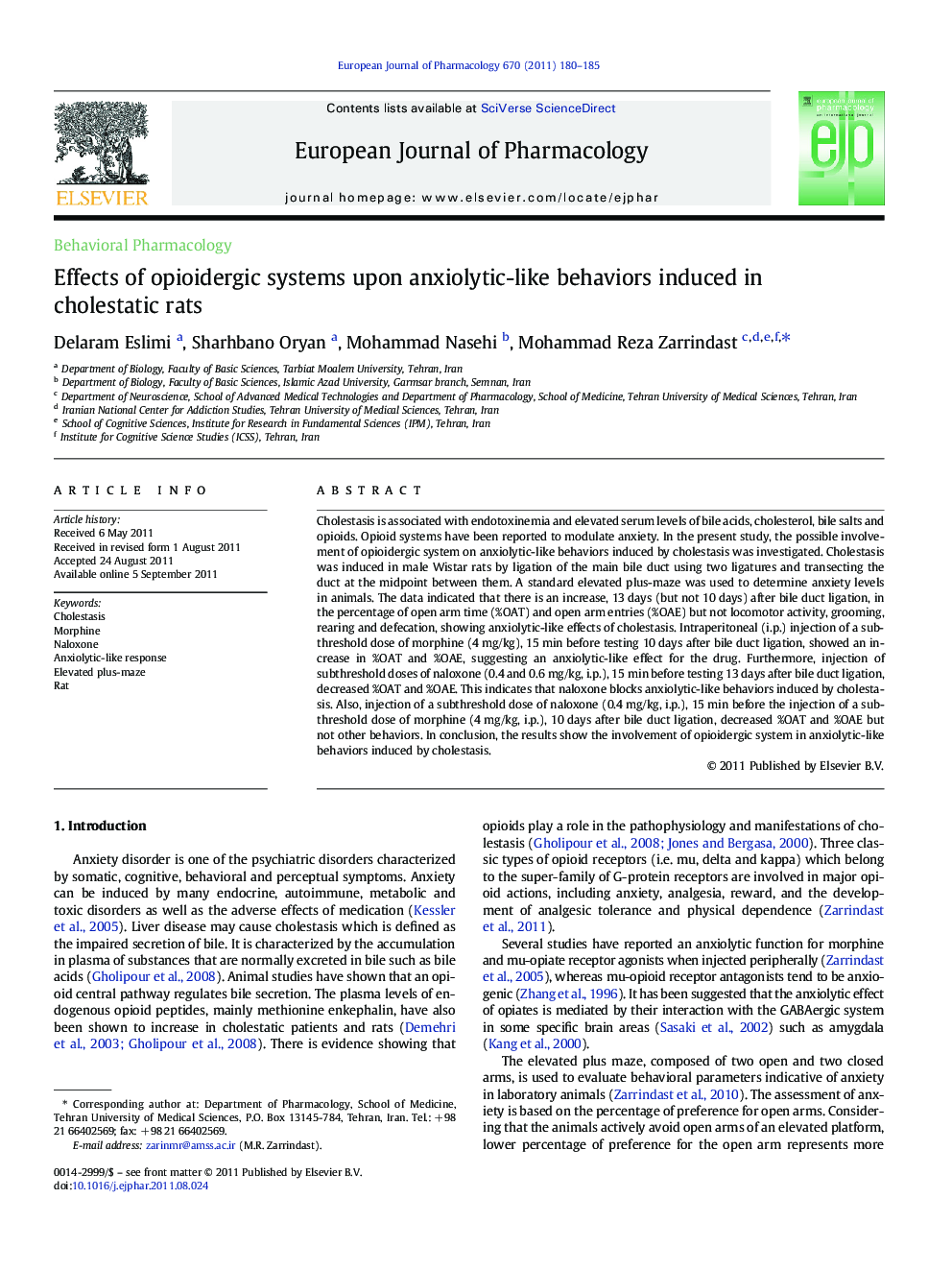| Article ID | Journal | Published Year | Pages | File Type |
|---|---|---|---|---|
| 5830228 | European Journal of Pharmacology | 2011 | 6 Pages |
Abstract
Cholestasis is associated with endotoxinemia and elevated serum levels of bile acids, cholesterol, bile salts and opioids. Opioid systems have been reported to modulate anxiety. In the present study, the possible involvement of opioidergic system on anxiolytic-like behaviors induced by cholestasis was investigated. Cholestasis was induced in male Wistar rats by ligation of the main bile duct using two ligatures and transecting the duct at the midpoint between them. A standard elevated plus-maze was used to determine anxiety levels in animals. The data indicated that there is an increase, 13Â days (but not 10Â days) after bile duct ligation, in the percentage of open arm time (%OAT) and open arm entries (%OAE) but not locomotor activity, grooming, rearing and defecation, showing anxiolytic-like effects of cholestasis. Intraperitoneal (i.p.) injection of a subthreshold dose of morphine (4Â mg/kg), 15Â min before testing 10Â days after bile duct ligation, showed an increase in %OAT and %OAE, suggesting an anxiolytic-like effect for the drug. Furthermore, injection of subthreshold doses of naloxone (0.4 and 0.6Â mg/kg, i.p.), 15Â min before testing 13Â days after bile duct ligation, decreased %OAT and %OAE. This indicates that naloxone blocks anxiolytic-like behaviors induced by cholestasis. Also, injection of a subthreshold dose of naloxone (0.4Â mg/kg, i.p.), 15Â min before the injection of a subthreshold dose of morphine (4Â mg/kg, i.p.), 10Â days after bile duct ligation, decreased %OAT and %OAE but not other behaviors. In conclusion, the results show the involvement of opioidergic system in anxiolytic-like behaviors induced by cholestasis.
Related Topics
Life Sciences
Neuroscience
Cellular and Molecular Neuroscience
Authors
Delaram Eslimi, Sharhbano Oryan, Mohammad Nasehi, Mohammad Reza Zarrindast,
